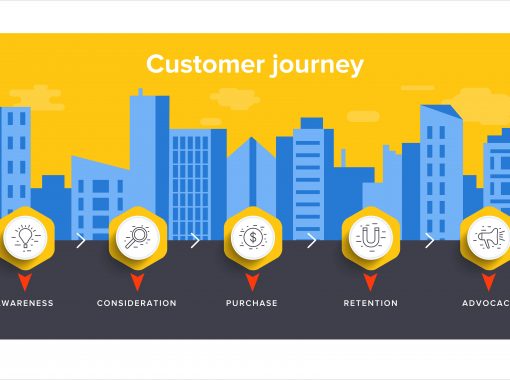
Long-Form Written Content: How to Create It and Why It’s Important
In today’s media-driven world, businesses must find a way to attract audiences’ attention and keep it. This is where written content comes into play. Written content is often how potential customers generate interest in your company, get details about products and become convinced to learn more or walk away.
Let’s take a closer look at the two sides of the written content coin: long-form content and short-form content.
Is Long-Form Content Necessary?
With written content, there are two approaches a writer can take. One is to create easily digestible, bite-sized content, or maybe even create social media posts on Twitter, Facebook, or LinkedIn. These kinds of content are all known as short-form content, primarily used to generate interest, answer initial questions, and drive traffic to a company’s website.
The other approach a writer can take is to go on a “deep dive,” as it is called in marketing, into a product or service by taking it apart piece by piece, weaving its components into a narrative, then supporting that information with research linked to authoritative sources, graphics, and interview quotes from experts. This type of writing is considered long-form content.
But is long-form content necessary with all the other quick ways available to grab a customer’s interest? The short answer is yes. Long-form content goes beyond general interest and gently persuades a reader, by fostering a relationship between the reader and the company. Long-form content builds on the initial attraction by providing valuable and authoritative information, thereby establishing the company as a
What Is Long-Form Content?
There is no solid, agreed-upon definition of long-form written content, but it has a few indefinite parameters supporting its description. For one, it is usually an article that contains between 1,000 and 7,000 words. Another criterion is that its function is to provide useful and valuable information to the reader.
As compared to the general information contained in a piece of short-form content, long-form content explores a topic in greater depth. Beyond that, its more serious job is to keep the reader engaged enough to spend more than a few minutes on the website. And that leads to its next important job: The page’s ranking in Google.
A series of long-form articles, in fact, coupled with the time visitors spend on a page, help establish a website as a credible source of information. A high Google rating means the search engine will suggest a page to others who seek similar information. Remember as well that a page that is optimized for search engines — what marketers call SEO content — will typically rank higher in a Google search.
When to Write Long-Form Content
There are many approaches you can take to creating content meant to reach a potential audience, such as through video, audio like podcasts, social media, short blog posts of less than 1,000 words, newsletters, and email. These are all considered short-form content.
So, when is the best time to use long-form content?
Long-form content is the best choice when the context, intent, audience, and purpose call for it. Use it when a quick and simple informational message created to grab someone’s interest simply will not get the job done. It’s also for when readers seek education and information, either to answer a question or find a solution.
Typically, long-form written content is one of the following:
- A longer blog post or article containing over 1,000 words.
- Evergreen content, aka information that retains relevance over time.
- Pillar content that covers several topic areas and can be broken into smaller content pieces relating to the main topic.
- Guides and tutorials.
- Whitepapers or eBooks.
Other types of long-form content that aren’t directly related to writing include webinars, virtual events, and video — which can be used as either short-form or long-form content. These types of communication “deep dives” are just as important as written long-form content because they can help with rankings in Google or Search Engine Result Pages, also called SERPs.
How to Write Long-Form Content
While it might be true that long-form content pieces typically rank better on Google, especially if the SEO is strong, that should not be your only reason for writing a long article. SERPs will be affected negatively if it only contains some good information amid a sea of fluff or filler. To write a successful piece of long-form content, follow these points:
- Find your content’s purpose. Questions to ask yourself should include: Does this content solve a problem for my audience? Who will read this? Does this content bolster my marketing strategy? Where and on what channels should I spend time promoting this content?
- Write a story that engages readers. Content that is straightforward and detail-laden may be necessary, but if it is devoid of energy, voice, character or anything that connects with a reader on an emotional and intellectual level, that reader will lose interest.
- Don’t write past the point where you lose sight of your message. Article length does matter because it will keep the reader on a website longer. But more words are not better if they don’t add value, offer new ideas, define difficult concepts, or improve the quality of the reader’s experience. That may seem like a lot to ask of both the writer and the reader, so keep the content focused overall.
- Keep paragraphs short and use visuals. A website visitor’s attention span is very short, so if they click on a long-form piece made up of one big block of text followed by another and then another, that reader may become intimidated and bored. Whenever possible, try to:
- Use subheadings to introduce white space and break up the text.
- Add bullet points and numbering to emphasize main content points.
- Insert images, graphs, and other visuals to make the content more easily digestible.
- Include hyperlinks to other pages on the same website, with keyword-rich anchor text to increase user engagement while boosting SEO.
- Promote the content by re-purposing. That can mean writing a summary of the piece for social media outlets, such as LinkedIn, Facebook, or Twitter. You can also create a carousel post on Instagram composed of photos that link back to the article or a short video for YouTube or LinkedIn. In other words, use short-form content to bring readers to your long-form content.
Examples of Long-Form Written Content
Whitepapers
Whitepapers are considered long-form as they are longer pieces of content with the goal of providing value to audiences and establishing authority in the industry. Though there are different approaches to whitepapers, some focus on a new product while others are solely focused on education, whitepapers contain insightful and unique information and run longer than 1,000 words.
Here is an example of our whitepaper on creating a successful content partnership strategy.
eBooks
eBooks, by definition, are any book in electronic form. eBooks vary in length, and are often adapted into digital form from an original print. Nowadays, it is a common content marketing practice to include eBooks as a form of brand promotion or lead magnet. These eBooks are created to stay digital, usually with accompanying graphics woven into the design of the eBook.
Here is an example of an eBook from Hubspot on professional networking tips.
Final Thoughts
As part of a company’s digital marketing strategy, long-form written content plays an essential role. It can help a company rank higher in Google listings while at the same time inviting readers to linger on a website and engage with the products and services a company offers. Short-form content on social media can lead a customer to engage with videos, webinars, and virtual events. These strategies — when combined, balanced and tailored to your brand — can only mean more sales leads or conversions in your future.
Doug has been a content writer for over 7 years and is an expert in the fields of tech, SEO, education, and many others.




